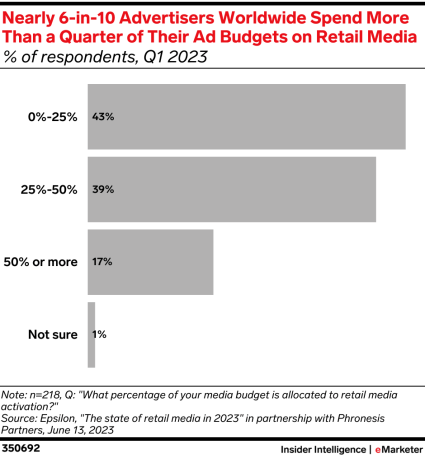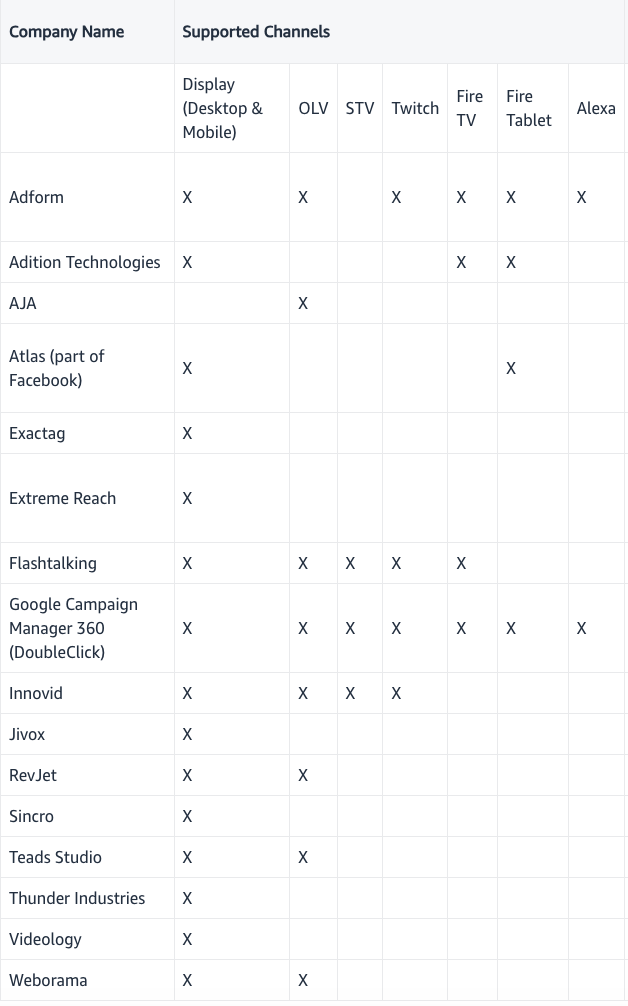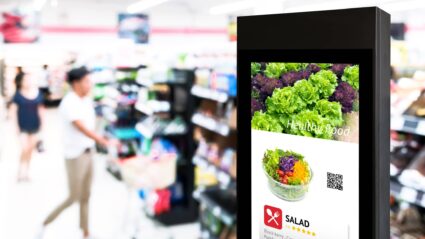When you think retail media, you’re probably thinking Amazon. That’s for good reason–Amazon’s retail media network (RMN) is undeniably the most powerful right now, thanks largely to the company’s massive reach.
But as more retailers like Walmart, Target, and Kroger develop their network capabilities and give marketers more options, even Amazon is beginning to feel the competition heating up. To keep pace, they’ve expanded their capabilities within their demand-side platform (DSP): non-endemic advertising.
Non-endemic advertising opens the door for more media opportunities by giving brands the option to advertise a broader range of products and services. It also allows for a greater number of brands to fully utilize Amazon’s breadth of first-party data, premium inventory, and publisher partners to drive traffic to their own website, whether they actually sell products on Amazon or not.
Non-endemic advertising is the next big thing in retail media, and brands willing to give it a try have a chance to capitalize on a major opportunity.
What non-endemic options mean for retail media advertisers
Over the past few years, RMNs have become an increasingly important piece of the pie for advertisers. According to eMarketer, nearly 6-in-10 advertisers spend a quarter of their budget on retail media. But some brands, like those that sell travel, insurance, financial planning, legal, real estate, tutoring, or education services, haven’t been able to take advantage of this major force in marketing because their products aren’t offered at retailers.

Source: eMarketer
In the traditional model, brands that advertised on Amazon were already selling their products on the website via Amazon stores. Ads were “endemic” to the platform, highlighting products that could be purchased directly onsite without users having to leave the Amazon ecosystem.
Non-endemic ads turn that on its head; instead of leading viewers straight to a product on Amazon, they use Amazon’s exclusive data and inventory to promote services or products for sale elsewhere.
Non-endemic unlocks Amazon’s DSP as a full programmatic solution for brands, allowing much-needed flexibility on the platform. Brands can expand their reach and targeting via Amazon’s wealth of first-party data as they never could before.
Since non-endemic advertising is relatively new and still developing, many brands that aren’t selling on retail websites haven’t waded into buying RMN inventory yet. That gives advertisers that are ready to test non-endemic ads a serious advantage.
Why Amazon’s the ruler of the non-endemic roost
Since Amazon has always been a leader in the retail media space, it’s no surprise that the platform is paving the way for other RMNs with its non-endemic capabilities. Although Walmart and Criteo are also making moves, Amazon’s features place its non-endemic offer miles ahead of the competition (at least for now).
One big draw for endemic and non-endemic brands alike is Amazon’s valuable first-party data. A huge number of consumers have already shared information on their purchasing history, location, and other personal information with the brand to take advantage of its ecommerce services, and advertisers on the platform can tap into that essential data. As the third-party cookie crumbles in 2024, that functionality will only become more essential to brands looking to target audiences using first-party data.
The introduction of ads to Prime Video this year will add another important tool to Amazon’s arsenal. Although some advertisers aren’t planning to purchase Prime Video ad inventory until they see how things go, there’s no denying that the launch is a big deal for any brand investing in retail media, since it allows brands to target streaming ads with Amazon’s data.
Right now, the platform is offering competitive rates with streaming TV to entice brands to try Prime Video ads and making big investments into new media opportunities such as live sports and emerging ad formats like interactive video on streaming TV (STV).
Amazon has also made strides with third-party programmatic integrations to ensure brand safety, reduce fraudulent traffic, and create a more addressable inventory. It introduced improvements like tagging and a CAPI integration with the Amazon Marketing Cloud.
Amazon continues to place a major focus on expanding and rolling out new advanced machine learning and measurement solutions to compete against rival DSPs like The Trade Desk, so watch this space; more developments are always on the way.

Source: Amazon
For advertisers interested in leveraging what’s shaping up to be retail media’s next frontier, Amazon is a great platform to get started on, especially with these new improvements. If your brand hasn’t considered investing in non-endemic ads on Amazon before, now might be the moment you’ve been waiting for.
How brands can buy into non-endemic opportunities today
Ready to make the leap into non-endemic advertising on Amazon? First, you should make sure your ads are right for the platform by identifying areas of overlap between products and services on the platform and your brand.
That can be as simple as advertising around related products–for example, serving an ad for an airline to a customer looking for a carry-on suitcase–but brands should carefully consider where their audience is and the other items or services they may be using to find more unconventional connections to non-endemic products.
Once you have a strategy for your campaign, there are two ways to launch non-endemic campaigns on Amazon: self-service or Managed Service. Anyone with an Amazon DSP self-service account can activate non-endemic campaigns right away, but most brands can’t access one alone; you’ll need to partner with an agency to take advantage of the self-service offering. Otherwise, brands can activate non-endemic campaigns via Managed Service directly with Amazon.
Keep in mind that you’ll need to set up tracking and measurement for non-endemic campaigns. That’s a change for brands already used to endemic campaigns on Amazon, which don’t require any complex tracking.
For non-endemic tracking, you’ll need:
- Site pixel creation and tagging via Amazon Ad Tag (AAT) and a tag management system
- Creative tagging system for ad performance measurement
With that tracking in place, you can leverage Amazon’s shopper data, AMC custom audience integrations, site pixel and lookalikes audiences, and more to effectively target your brand’s audience on the platform.
Non-endemic ads still have a long way to go before they become a mainstream part of RMN advertising, but by jumping in early, your brand will have a chance to get ahead on the next step toward retail media dominance.







Responses